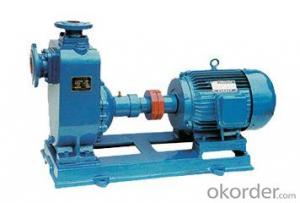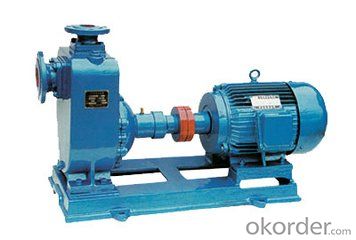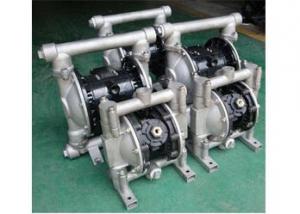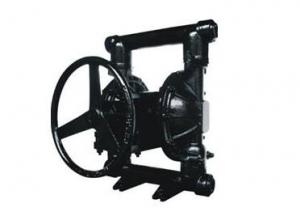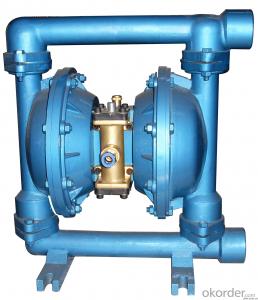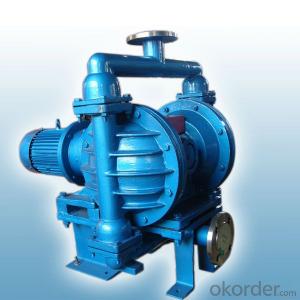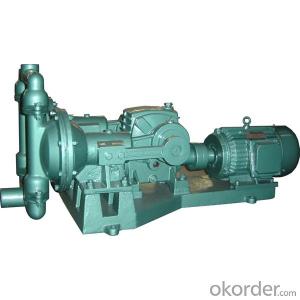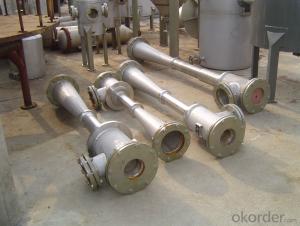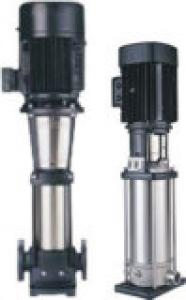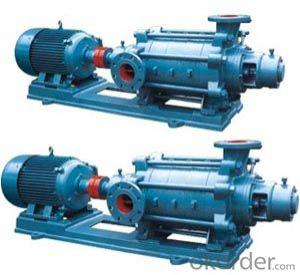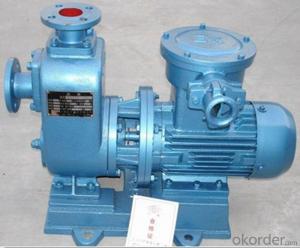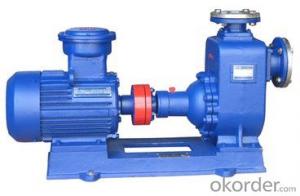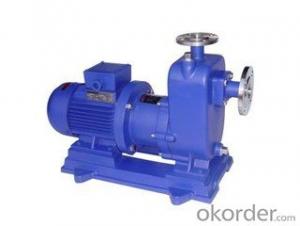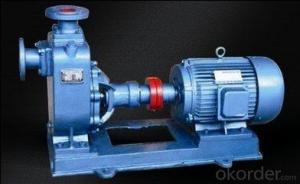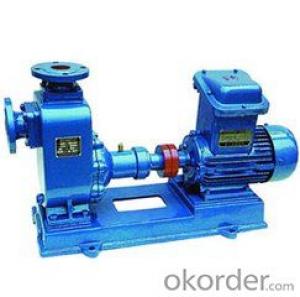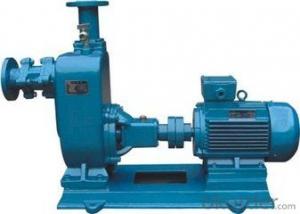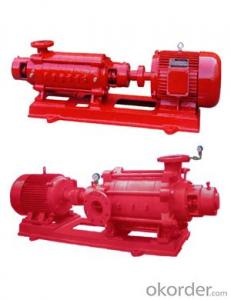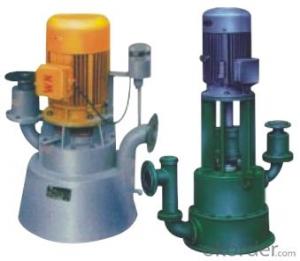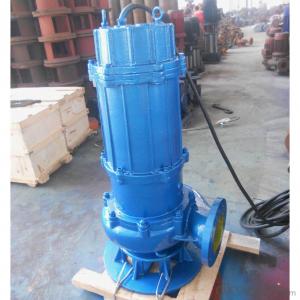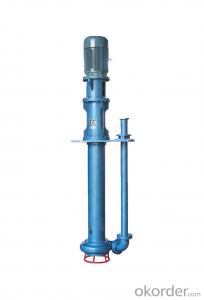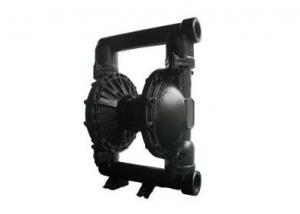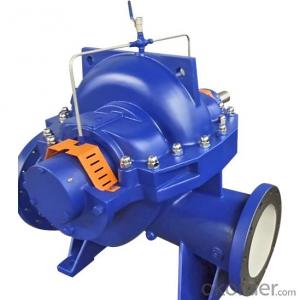ZX series self-priming pump 40ZXZX15-60
- Loading Port:
- Shanghai
- Payment Terms:
- TT OR LC
- Min Order Qty:
- 10 unit
- Supply Capability:
- 300 unit/month
OKorder Service Pledge
OKorder Financial Service
You Might Also Like
A, product overview
This company produces the ZX series self-priming pump is the earliest according to relevant technical data at home and abroad after absorption, digestion, improve the development of pump energy saving products.Self-priming centrifugal pump, the pump and other pump does not have the self-priming capacity, etc.Such as corrosion resistant mechanical seals and stainless steel material can call some of the chemical, pharmaceutical acid and alkali medium.
Second, the product features
1, the pump with self-priming function, do not need to install the bottom valve in pipeline, only to ensure storage in pump body before work are quantitative liquid can have "a drainage, life-long self-priming" function.So both simplifies the pipeline system, and improved the working conditions.
2, has a compact structure, convenient operation, stable operation, easy maintenance, high efficiency, long service life.
Three, use the product
1) suitable for urban environmental protection, construction, fire control, chemical, pharmaceutical, dyes, and dyeing, brewing, electric power, electroplating, papermaking, oil, mining, equipment cooling, tanker unloading, etc.
(2) apply Yu Qingshui, sea water, chemical liquid medium with acid, alkalinity and with general mushy slurry (medium viscosity 100 mile, or less under the solid content of 30%).
(3) mount a rocker arm sprayer, the water can go into the air, a small drips to spray, is a good tool for farm, nursery, garden, tea garden.
And (4) can be matched with pressure filter of any model and specifications, sending size belt filter to filter the most ideal auxiliary pump.
Fourth, working conditions
Traffic: 3 ~ 500 m3 / h
Head: 10 ~ 80 m
Ambient temperature 50 ℃ or less
Medium temperature is 100 ℃ or less
Medium density of 1.24 or less by 103 kg/m3
- Q: What is the power consumption of an air pump?
- The power consumption of an air pump can vary based on several factors, including the pump's size and type, as well as its specific application. Generally, air pumps are designed to be energy-efficient and consume relatively low amounts of power compared to other electrical devices. To measure the power consumption of an air pump, watts (W) or sometimes kilowatts (kW) are typically used. Smaller air pumps, like those for fish tanks or small inflatable items, usually have power ratings ranging from 5W to 20W. These pumps can operate continuously or intermittently and are typically connected to a standard electrical outlet. On the other hand, larger air pumps, used for industrial or commercial purposes, can have power ratings ranging from 100W to several kilowatts. These pumps can generate higher air pressures and flow rates, necessitating more power for operation. They are often connected directly to higher voltage electrical systems to accommodate their power needs. It's important to note that other factors can also influence the power consumption of an air pump, including the air pressure or volume it produces, the motor's efficiency, and any additional features or functionalities it possesses. Therefore, it's always advisable to consult the manufacturer's specifications or user manual for accurate information about a specific air pump model's power consumption.
- Q: Are air pumps suitable for pressure testing?
- Air pumps are unsuitable for pressure testing. Despite their ability to generate pressure, they lack the accuracy and reliability required for pressure testing applications. Precise and consistent pressure levels are necessary for pressure testing, and air pumps usually fail to maintain a stable pressure over an extended period. Furthermore, air pumps may have limitations on the maximum pressure they can produce, which may not meet certain pressure testing needs. Hence, it is advisable to utilize specialized pressure testing equipment that is specifically designed for accuracy, control, and reliability.
- Q: Can an air pump be used for inflatable beach balls?
- Certainly! An air pump is capable of inflating inflatable beach balls. In reality, it stands as one of the most efficient and convenient methods to inflate them. By employing an air pump, one can guarantee that the beach ball achieves the desired size and saves considerable time and effort when compared to manually inflating it. Furthermore, an air pump offers a consistent and controlled air pressure, effectively preserving the beach ball's form and preventing excessive inflation.
- Q: How does an air pump handle different inflation valve designs?
- An air pump is typically designed with multiple nozzle attachments, each designed to fit different inflation valve designs. These attachments are interchangeable, allowing the pump to handle various valve designs by simply switching to the appropriate nozzle attachment.
- Q: Can an air pump be used for inflatable gardening tools?
- No, an air pump is typically not suitable for inflating gardening tools as they usually require a different type of inflation method such as manual pumping or using a specific tool provided with the gardening equipment.
- Q: How does an air pump handle different air pressures?
- An air pump is designed to handle different air pressures by utilizing its internal mechanisms and adjusting the flow of air accordingly. When the air pump is initially turned on, it creates a low-pressure area by increasing the volume of the chamber or cylinder where the air is being compressed. This low-pressure area causes the surrounding air to rush in, filling the chamber. As the air fills the chamber, the pump's piston or diaphragm compresses the air by reducing the volume of the chamber. This compression increases the air pressure inside the pump. The pump's valves ensure that the air flows in one direction, preventing it from escaping back into the low-pressure area. The air pump is equipped with a pressure regulator or gauge that allows the user to adjust the desired air pressure. By adjusting this regulator, the user can control the compression of the air inside the pump, thus controlling the air pressure that is released. When the desired air pressure is reached, the pump automatically shuts off or stops compressing the air. This prevents the air pressure from exceeding the desired level and ensures that the pump does not get damaged. Overall, an air pump handles different air pressures by creating low-pressure areas to draw air in, compressing the air to increase its pressure, and regulating the air pressure using valves and pressure regulators. This allows the pump to effectively inflate objects or provide a steady supply of compressed air for various applications.
- Q: Are there any specific safety features to prevent overheating in an air pump?
- Yes, there are specific safety features in air pumps to prevent overheating. One common safety feature is a built-in thermal protection switch. This switch monitors the temperature of the air pump and automatically shuts it off if it exceeds a certain temperature threshold. This prevents the pump from overheating and potentially causing damage or starting a fire. Additionally, air pumps often have built-in cooling mechanisms such as fans or heat sinks to dissipate heat and keep the internal components at a safe operating temperature. These cooling mechanisms help prevent overheating by promoting airflow and heat transfer away from the pump. Some high-end air pumps also come with temperature sensors that constantly monitor the internal temperature and adjust the pump's operation accordingly. For example, if the temperature starts to rise, the pump may slow down or reduce its output to prevent overheating. It's important to note that even with these safety features, it is still essential to use the air pump responsibly and avoid blocking the airflow or operating it in extremely hot environments. Regular maintenance and cleaning of the pump can also help prevent overheating by ensuring that dust or debris does not clog the cooling mechanisms.
- Q: How long does it take to inflate an object using an air pump?
- The time it takes to inflate an object using an air pump can vary depending on various factors such as the size of the object, the type of air pump being used, and the desired level of inflation. Generally, smaller objects such as balloons or small inflatable toys can be inflated within a matter of seconds to a few minutes. On the other hand, larger objects like air mattresses or inflatable boats may take several minutes to fully inflate. Additionally, the type of air pump being used can also affect the inflation time. Manual pumps, which require physical effort, may take longer compared to electric or battery-operated pumps, which can inflate objects more rapidly. It is important to refer to the specific instructions provided by the manufacturer of the air pump and the object being inflated to obtain accurate information on inflation time.
- Q: Are air pumps suitable for inflating sports balls?
- Air pumps are indeed appropriate for inflating sports balls. They are engineered specifically for the purpose of inflating different kinds of balls, including soccer balls, basketballs, footballs, and volleyballs. These pumps supply a consistent flow of air and enable accurate regulation of the inflation procedure. By utilizing an air pump, you can guarantee attaining the desired level of inflation, thus maximizing the sports ball's performance. Moreover, air pumps frequently include various nozzle attachments to accommodate diverse valve types found on sports balls, rendering them versatile and apt for inflating an extensive array of sports balls.
- Q: How to prevent overheating of an air pump?
- To prevent an air pump from overheating, there are several actions you can take: 1. Ensure proper ventilation: Place the air pump in a well-ventilated area to allow for adequate airflow. This will help dissipate heat and prevent overheating. Avoid enclosing the pump in tight spaces or covering it with materials that restrict airflow. 2. Clean the pump regularly: Dust and debris can accumulate on the air pump, blocking ventilation and causing overheating. Clean the pump's exterior regularly to remove any dirt or dust build-up. Use a soft brush or cloth to maintain proper airflow and prevent overheating. 3. Monitor the operating temperature: Keep an eye on temperature indicators or sensors that may be built into the air pump. If the temperature starts to rise significantly, take appropriate action to prevent overheating. If your pump doesn't have temperature sensors, periodically measure the temperature around the pump using a separate thermometer. 4. Avoid excessive workload: Overworking the air pump can lead to overheating. Do not exceed the recommended capacity of the pump. Check the manufacturer's guidelines to determine the maximum load the pump can handle. Consider using multiple air pumps instead of burdening a single one if you need to increase airflow. 5. Use heat-resistant materials: If the air pump is in a high-temperature environment, consider using heat-resistant materials around it. Insulate the area with materials that have good thermal properties or use reflective surfaces to deflect heat away from the pump. This will minimize heat transfer and reduce the risk of overheating. 6. Maintain proper power supply: Connect the air pump to a stable and appropriate power supply. Fluctuations in voltage or using an incorrect power source can cause overheating. Check the power requirements of the pump and use a high-quality power source that meets those specifications. By implementing these preventive measures, you can significantly reduce the risk of overheating for your air pump, ensuring its longevity and optimal performance.
Send your message to us
ZX series self-priming pump 40ZXZX15-60
- Loading Port:
- Shanghai
- Payment Terms:
- TT OR LC
- Min Order Qty:
- 10 unit
- Supply Capability:
- 300 unit/month
OKorder Service Pledge
OKorder Financial Service
Similar products
Hot products
Hot Searches
Related keywords
